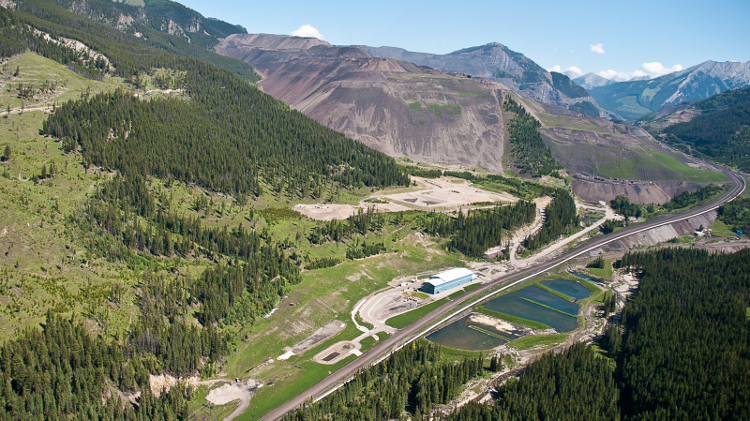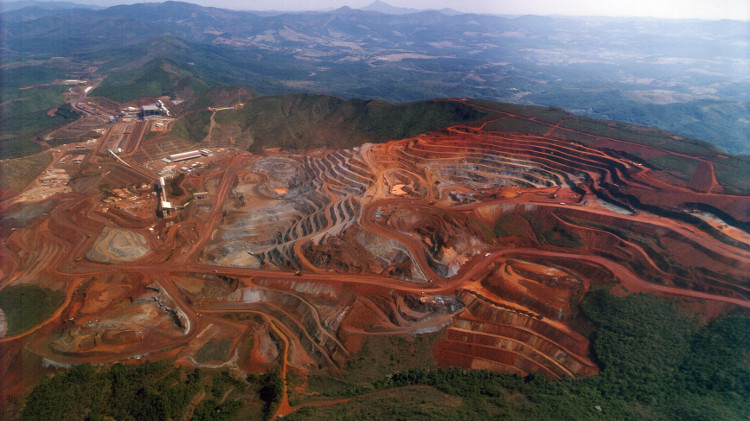The view of First Cobalt's Keeley-Frontier site. First Cobalt merged with Cobalt One and CobaltTech in late June. Cobalt's value increased by 75 per cent in 2017 thanks to the "electric vehicle narrative," PwC Canada’s Canadian Mining Leader Liam Fitzgerald said. Courtesy of First Cobalt
A turnaround is afoot, according to PwC Canada’s junior mining report. Released earlier this month, the report found that investment in the junior sector has increased. That investment, however, has been selective, indicating that mining’s recovery may still face some hurdles.
The annual report analyzes Canada’s top 100 junior mining companies by market capitalization over a 12-month period. The report is designed to provide a glimpse of the sector’s overall health.
PwC Canada’s Canadian Mining Leader Liam Fitzgerald spoke with CIM Magazine about the state of junior mining in Canada, the theme that shaped last year’s investment activity and what to keep an eye on as we approach 2018.
CIM: What are some of the biggest changes you noticed compared to last year’s report?
Fitzgerald: Last year’s story was more about the increase in valuation because of the increase in gold prices during late 2015 and early 2016. Because of the high concentration of gold exposure on the TSX-Venture Exchange (TSX-V) there was a fairly remarkable increase in value.
This year’s report is more about a cash story. If you look at the cash balances overall, there’s a surge of more than 174 per cent. Average cash balances went to $16 million up from $10 million, but more importantly is the cash available. About $2.5 billion was raised during the year through a combo of equity and debt. With only about $1.1 billion spent, it represents a remarkable year-over-year increase.
When you're looking at confidence, valuation is one story but the real focus is that the cash started to flow, meaning money’s being spent. Just the level of activity in the industry has improved year over year.
CIM: How are junior mining investors embracing risk this year?
Fitzgerald: The Cobalt 27 Capital call raised $200 million in what many would consider to be a risky market. They’ve created a niche market not actually mining the cobalt, but storing it. They’re also doing royalties and other alternative financing streams to give investors access to cobalt and people are buying into the narrative.
They raised $200 million based on narratives about electric vehicles and battery storage. Cobalt 27 went from nowhere last year to the top ten of our ranking.
Investors are taking more risks but are being fairly picky about what risks they take. They’re putting their money on the electric vehicle market because it’s growing rapidly. Putting it on a metal that traditionally wouldn’t garner a lot of interest but is now getting a lot of it. They’re not putting a lot of money on grassroots exploration, they are putting money on what they think is a big bet.
Related: Cobalt staking rush in Ontario spurred by booming battery market and ethical concerns over sourcing
CIM: Were there any surprises in 2017?
Fitzgerald: The fact that cobalt was so successful this year – it increased in value by 75 per cent. But maybe it shouldn’t be surprising because of the success of the electric vehicle narrative.
In previous years raising $50 million was remarkable, and now you’ve got a cobalt company raising $200 million. I doubt anyone would have predicted that. It was probably one of the stories of the year.
Another thing to note is we actually had some initial public offerings this year. During the previous report period we had zero, but this time we had five. They only raised $40 million collectively but at least we had them. We’re hoping in the next report that there are more – maybe adding another zero on the back of that number.
CIM: Have there been a lot of shifts in the rankings since last year?
Fitzgerald: If you look at the top five year-over-year, there’s always a change. Normally it’s like a graduation: you either move up to the TSX or get purchased.
Some companies are kind of holding water but still doing well in our rankings. We haven't seen many rocket down the list unlike previous years where it’s happened. San Gold, which was at the top of our list several years ago is no longer in business. We’re not seeing that anymore, which is positive. It gives you a bit of faith that we have a bit of momentum for the next couple of years.
CIM: Were there any trends that were negative or cause for concern?
Fitzgerald: A lot of the momentum in our previous report was from the increase in gold prices. They were in the range of US$1,250 to US$1,300 per ounce.
Because there’s a lot of exposure to the gold market on the TSX-V, the gold prices influence it. And we only saw a modest increase in value of that market year-over-year.
I think a lot of investors and companies are cautious about projecting where the gold prices are going to go. If they go to less than US$1,100, a lot of value might come off and the cash flow of gold companies may not be as readily available.
Related: Goldcorp partners with junior miners in new greenfields exploration strategy
CIM: What are some of the big lessons that companies should be taking from the trends seen in 2017?
Fitzgerald: It’s the success of the narrative. Management teams that have been able to gather interest, get money in their door and try and advance their projects have had defined stories.
Barkerville Gold Mines is a good example. They didn’t get a huge amount of money on the market but they got interest from Osisko Gold Royalties and Osisko Mining and enough cash to advance their projects. It comes from a management team that worked very hard to come up with a narrative and had a good story to tell.
Another example is Leagold. They identified an asset they wanted – the Los Filos mine – and mapped out how they’ll put it in production. They raised $175 million to enable them to do that by creating a good narrative for the project.
CIM: What stories or trends are you watching out for in 2018?
Fitzgerald: The trends in cash flow, to make sure that companies continue to spend their money prudently. They have $1.5 billion collectively to spend in 2018. How will that play out? Will they be prudent? Will they be able to fill their coffers? That’s going to be a key story to see how their cash flow goes.
Looking at the mergers and acquisitions (M&A) market, a lot of majors like Barrick and Agnico Eagle are putting small investments in the junior sector in order to fund their exploration programs. Will that pattern continue? We’ll also look for more aggressive activity in the M&A market. It’s mostly friendly deals right now but perhaps we’ll see one company with two suitors, for example. This will also indicate a lot more confidence and strength in the market.
This interview has been condensed and edited for clarity.




